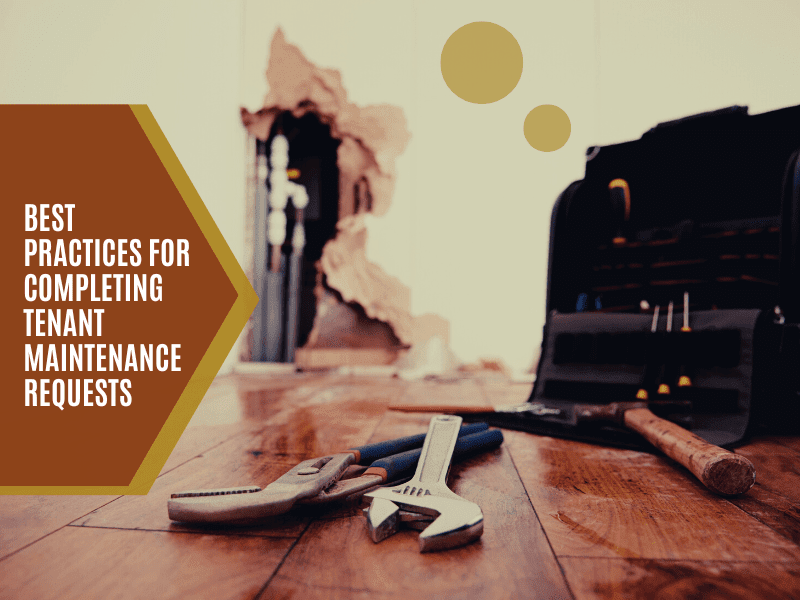
Maintenance responses drive tenant retention and satisfaction. When landlords are quick to respond to the needs of their tenants, those tenants are more likely to renew lease agreements, pay rent on time, and be easy to work with throughout the tenancy. When landlords are slow to respond to the repair needs of their tenants, those residents grow frustrated pretty quickly.
A lot of the rental property owners we talk to dread those maintenance requests that come in from tenants. They don’t like the expense, and they see the repairs and replacements that they must make as a burden.
Maintenance isn’t getting any cheaper, either. The cost of supplies, materials, and labor is going up and up and up. Not responding to maintenance needs only makes things more expensive, however.
Responding to repair requests right away is in your best interest and the best interests of your investment property. Not only does it preserve the condition of your asset, it also keeps your tenants happy. You need to be responsive, even if the requested repair seems like a minor issue.
We know it can be expensive and we know it can be time-consuming. But, the alternative is deferred maintenance and surprise emergencies that are always more costly than those small fixes.
Here are some of the ways we complete tenant maintenance requests to ensure quality and satisfaction as expert property managers in San Jose and throughout Santa Clara County.
Preventative Maintenance is Where it Starts
You should endeavor to cut down on those expensive and disruptive emergency maintenance issues as often as possible.
That’s possible when you take a preventative maintenance approach with your rental property. You’ll cut down on the number of emergencies and surprise repairs that occur at the home. For example, if you have an HVAC contractor inspect and service your heating and cooling unit once or twice a year, you’ll extend the lifespan of that expensive unit and reduce the likelihood that a major repair will be needed. This saves you money and stress, and it helps your tenants by ensuring the system is running efficiently and keeping their utility bills down.
Stay up to date on roof inspections, pest control, and landscaping. These preventative services can cut down on the repairs you need to make throughout the tenancy, giving your residents fewer reasons to feel uncomfortable in the home.
Talk About Maintenance Expectations With Tenants
We talk about communication a lot, and it’s especially important for you and your tenants when you’re discussing maintenance.
Before your tenants move in, be sure to have a detailed discussion about the lease agreement they’re signing. Included in that lease and your conversation should be instructions on how to report maintenance. You want your tenants to understand that you need to hear about repair issues right away. You don’t want tenants to neglect to report leaks or malfunctioning appliances.
It’s also a good opportunity to define the difference between an emergency and a routine repair. Your tenant doesn’t need to call you in the middle of the night when the garbage disposal gets stuck.
Emergencies will involve fires, floods, and anything that puts a person’s life or your property in danger. Help your tenants understand the difference since emergencies will require a different reporting process than routine maintenance needs.
Document Your Process and Your Repair Requests
All emergencies should be reported immediately. You’ll want your tenants to call you as soon as it is safe to do so. Make sure they have your contact information, and make sure you answer the phone when they call. If you’re going away, you’ll need to have someone you can trust ready to respond to potential problems.
For routine repairs, we’ve found it’s better to have those maintenance requests made in writing. This gives you a documented record of when the request was made, what was described, and how it was handled. This will help you eliminate any disputes about work that was never done or requests that were ignored.
Documented maintenance requests also provide you with a written record of the work that was performed at your property. It can help you estimate the lifespan of systems and appliances.
Create a Preferred Vendor List for Maintenance Needs
Cheap labor from people who are not licensed and insured can seem attractive, especially when you want to save money. But, cutting corners can have disastrous (and ultimately more expensive) results.
Let’s say you hire some random guy with a truck to paint your house or trim your trees and he falls off a ladder and injures himself. Guess who will be sued? You. You may find yourself liable for medical expenses and additional losses.
Work with vendors and contractors you can trust, who guarantee their work.
Sometimes, owners and landlords want to do their own work. This may seem like it’s saving you money, but think about whether you really have the time to respond in an appropriate fashion. If you can’t get over to the property until the weekend or an afternoon that you have off from work, your tenant is going to become frustrated that the repair is taking so long.
Put Clear Responsibilities in Your Lease Agreement
 Establish what your tenants are responsible for and what they should put in a maintenance request for. You don’t want your tenants flushing water heaters or hanging drywall. Make sure you’re clear about what tenants are required to do and what they should not do. For example, changing batteries and light bulbs and air filters are normally the tenant’s territory. It should say as much in the lease. Don’t let them make repairs that a vendor should make, however.
Establish what your tenants are responsible for and what they should put in a maintenance request for. You don’t want your tenants flushing water heaters or hanging drywall. Make sure you’re clear about what tenants are required to do and what they should not do. For example, changing batteries and light bulbs and air filters are normally the tenant’s territory. It should say as much in the lease. Don’t let them make repairs that a vendor should make, however.
Managing maintenance requests from tenants takes time and resources. If you’d like some help with this process, we’re here to provide it. Please contact us at Metro Property Management. We’re a San Jose, California based property management company serving Santa Clara County, including South County, Campbell, Saratoga, Cupertino, Sunnyvale, Los Gatos, Milpitas, and the surrounding areas.
